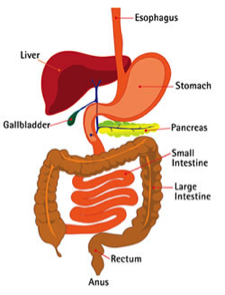

Your healthy child starts complaining of nausea and then starts vomiting. She cannot keep any fluids down and is starting to feel feverish. Is it a 24-hour stomach bug or something more?
The pancreas is an organ that is located just behind the stomach.

The job of the pancreas is to produce enzymes or “juices” that help digest the food we eat. The pancreas also makes two hormones, insulin and glucagon, that help control our blood sugar. These enzymes and hormones are made in the pancreas and then excreted through ducts into the first part of the small intestine. Once in the small intestine, the enzymes and hormones become “active” and start working.
The Healthy Pancreas:
The Diseased Pancreas:
Symptoms of Pancreatitis:
Pancreatitis Symptoms vs. Symptoms from a Stomach Virus:
Causes of Pancreatitis:
How is the Diagnosis of Pancreatitis Made?
What is the Treatment for Pancreatitis:
Fortunately, most children with pancreatitis recover within 1 week  and can resume eating and drinking with no permanent damage to the pancreas. However, some children can develop a reoccurrence or complication that requires further medical management. Therefore, it is important to recognize the symptoms early and consult with your child’s doctor.
and can resume eating and drinking with no permanent damage to the pancreas. However, some children can develop a reoccurrence or complication that requires further medical management. Therefore, it is important to recognize the symptoms early and consult with your child’s doctor.
If you would like more information about gastrointestinal (GI) digestive disorders and nutrition in children, please contact Dr. Mona Dave’s Frisco Office or Request Appointment Here.